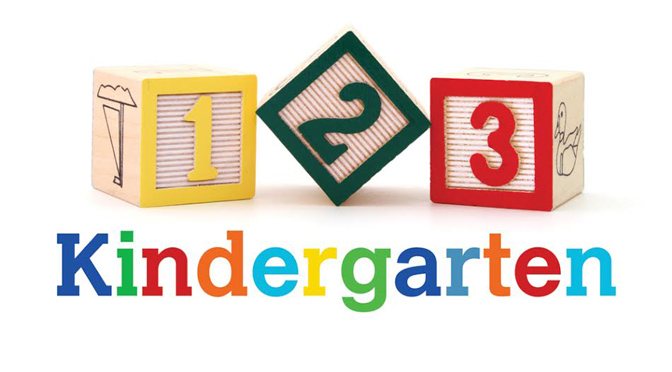Helping Children Learn to Play with a Ball
Playing with a ball is so natural that even animals will push them to make the balls move around or chase them. Children not only roll and chase, but also throw, bounce, and kick balls and we can extend their natural play.
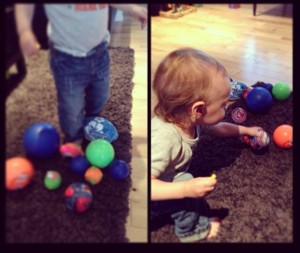 While playing with balls, kids are learning how to act purposefully and to coordinate their body, as well as noticing the effect of their actions. They are predicting what will happen each time and making adjustments based on the outcome. That’s already lots to learn, but as parents and caregivers we are children’s first teachers. We can just as naturally expand their play and enhance their learning.
While playing with balls, kids are learning how to act purposefully and to coordinate their body, as well as noticing the effect of their actions. They are predicting what will happen each time and making adjustments based on the outcome. That’s already lots to learn, but as parents and caregivers we are children’s first teachers. We can just as naturally expand their play and enhance their learning.
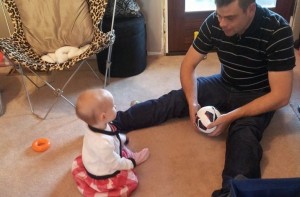 One of the most simple ways to share about ball play is by participating. Rolling a ball back and forth with a child may not seem like much but the back and forth action sets up a pattern used in conversations. The your turn-my turn also forms part of relationships.
One of the most simple ways to share about ball play is by participating. Rolling a ball back and forth with a child may not seem like much but the back and forth action sets up a pattern used in conversations. The your turn-my turn also forms part of relationships.
As we play with children, we use a variety of words and different language structures. Learning to use a language fluently will take years and millions of words. Research estimates that a child hears between 3 and 10 million words a year before school. We need to use words in as many situations as possible and encourage children to use them too. Playing ball is one opportunity to do so.
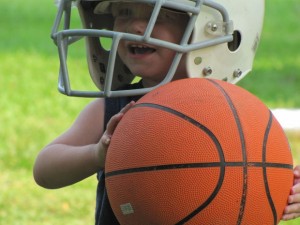 Once children are ready, we can introduce them to more complicated games than back and forth. This can grow from trying to roll a ball under a chair to aiming for an empty box placed on its side to kicking around a ball in a large outdoor space. Children will create their own challenges and add in rules. Organized games such as soccer are appropriate for older children and develop from baby, toddler, and preschooler ball play.
Once children are ready, we can introduce them to more complicated games than back and forth. This can grow from trying to roll a ball under a chair to aiming for an empty box placed on its side to kicking around a ball in a large outdoor space. Children will create their own challenges and add in rules. Organized games such as soccer are appropriate for older children and develop from baby, toddler, and preschooler ball play.
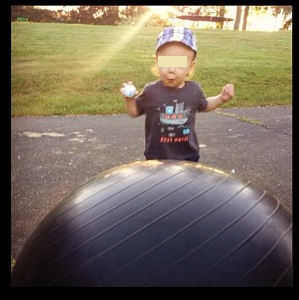 Some math can also be added to ball play. Children will hear us count and will count themselves. The numbers may not be accurate but they are learning to count each action, one at a time. We can include different sizes for more ball fun.
Some math can also be added to ball play. Children will hear us count and will count themselves. The numbers may not be accurate but they are learning to count each action, one at a time. We can include different sizes for more ball fun.
Children learn from watching, listening, and imitating, as well as from their own actions and explorations. By participating occasionally and showing them different ways to play by themselves and with others, we can enhance their play and early learning. Plus, the fun we experience with them creates life-long bonds. Is it time to Play Ball?
